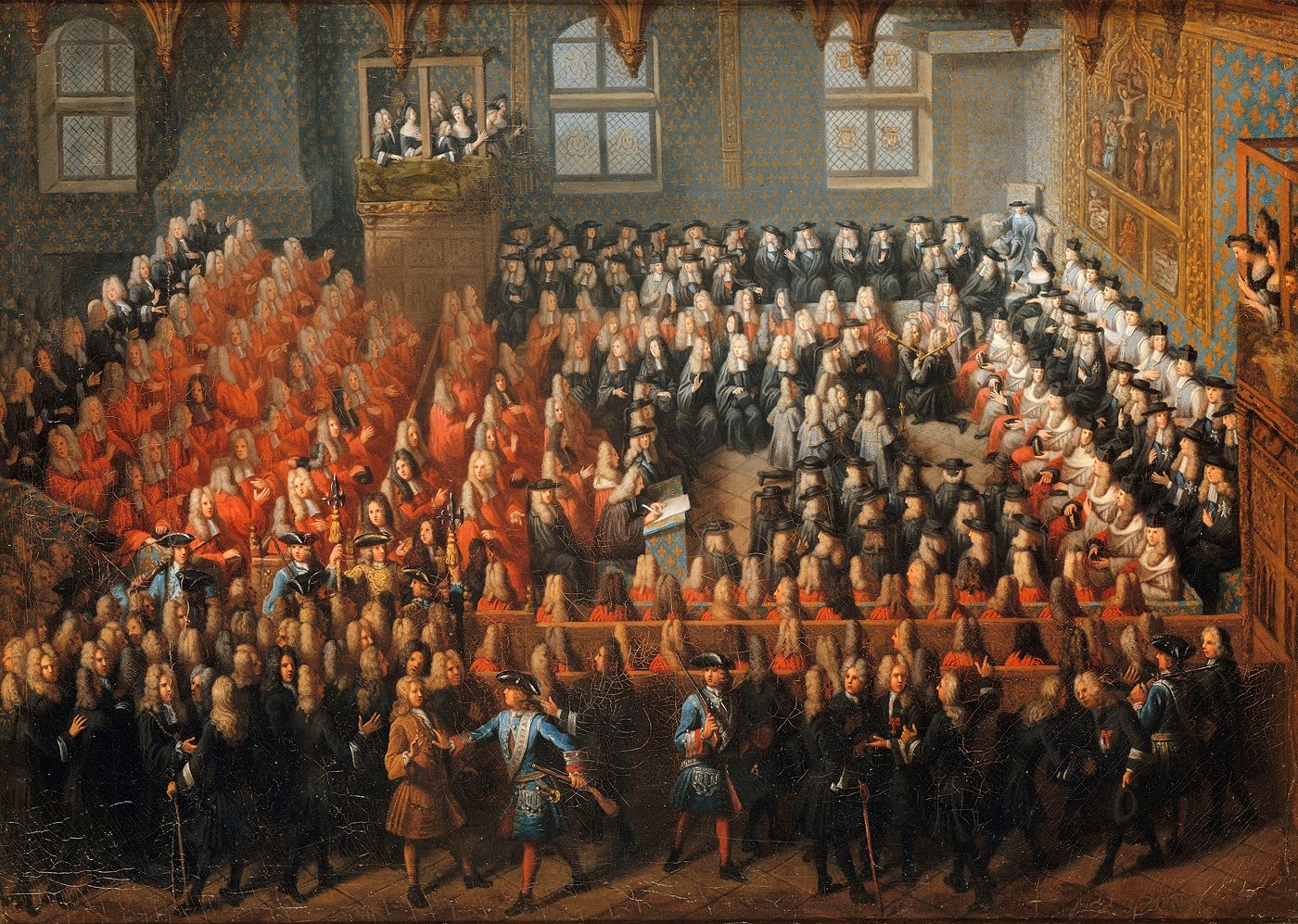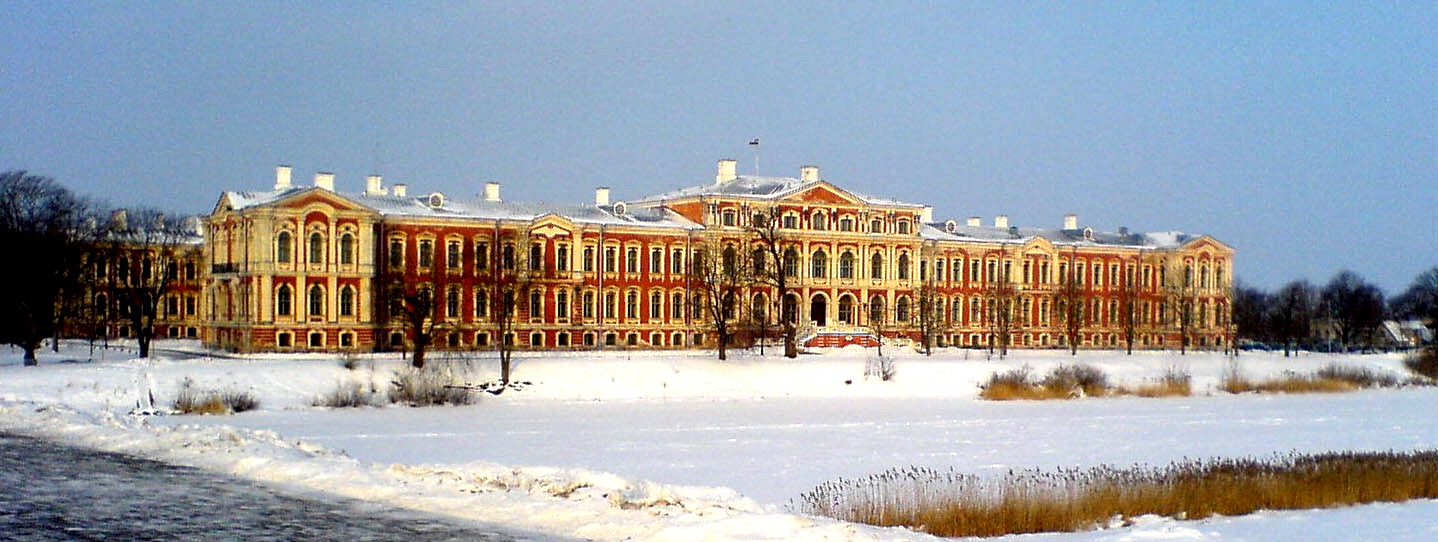|
Louis-Siffren-Joseph De Salamon
Louis-Siffren-Joseph de Salamon (b. at Carpentras, 22 October 1750; d. at Saint-Flour, 11 June 1829) was a French Bishop of Saint-Flour, and papal diplomat of the period of the French Revolution. Life After studying law and theology at Avignon, at that time belonging to the Papal States, he was made auditor of the Roman Rota by the favour of Pope Pius VI. This office he resigned for a post in the Parlement of Paris, where he took part in the famous case of the Diamond Necklace (1784), which Cardinal de Rohan had supposedly purchased for Marie Antoinette, but which was later revealed to have been purchased for Jeanne de la Motte. He continued to be a member until the Parliament was abolished (1790). Meanwhile he had kept up a correspondence with the cardinal Secretary of State, informing him of all that passed in Paris and could be of interest to Pius VI. When the nuncio, Antonio Dugnani, left Paris towards the end of 1790, the Pope appointed Salamon to be his internuncio ... [...More Info...] [...Related Items...] OR: [Wikipedia] [Google] [Baidu] [Amazon] |
His Excellency
Excellency is an honorific style (manner of address), style given to certain high-level officers of a sovereign state, officials of an international organization, or members of an aristocracy. Once entitled to the title "Excellency", the holder usually retains the right to that courtesy throughout their lifetime, although in some cases the title is attached to a particular office and is held only during tenure of that office. Generally people addressed as ''Excellency'' are heads of state, heads of government, governors, ambassadors, Roman Catholic bishops, high-ranking ecclesiastics, and others holding equivalent rank, such as heads of international organizations. Members of royal families generally have distinct addresses such as Majesty, Highness, etc.. While not a title of office itself, the honorific ''Excellency'' precedes various titles held by the holder, both in speech and in writing. In reference to such an official, it takes the form ''His'' or ''Her Excellency''; in ... [...More Info...] [...Related Items...] OR: [Wikipedia] [Google] [Baidu] [Amazon] |
Parlement Of Paris
The ''Parlement'' of Paris () was the oldest ''parlement'' in the Kingdom of France, formed in the 14th century. Parlements were judicial, rather than legislative, bodies and were composed of magistrates. Though not representative bodies in the present sense of the word, they had procedures and authorities that could delay the otherwise unchecked power of the King. Because of its location and history, the Parlement of Paris was the most significant. The Parlement of Paris was established under Philip IV of France in 1302. The Parlement of Paris would hold sessions inside the medieval royal palace on the Île de la Cité, which today is the site of the Paris Hall of Justice. History In 1589, Paris was effectively in the hands of the Catholic League. To escape, Henry IV of France summoned the parlement of Paris to meet at Tours, but only a small faction of its parliamentarians accepted the summons. (Henry also held a parliament at Châlons, a town remaining faithful to the king ... [...More Info...] [...Related Items...] OR: [Wikipedia] [Google] [Baidu] [Amazon] |
Footnotes
In publishing, a note is a brief text in which the author comments on the subject and themes of the book and names supporting citations. In the editorial production of books and documents, typographically, a note is usually several lines of text at the bottom of the page, at the end of a chapter, at the end of a volume, or a house-style typographic usage throughout the text. Notes are usually identified with superscript numbers or a symbol.''The Oxford Companion to the English Language'' (1992) p. 709. Footnotes are informational notes located at the foot of the thematically relevant page, whilst endnotes are informational notes published at the end of a chapter, the end of a volume, or the conclusion of a multi-volume book. Unlike footnotes, which require manipulating the page design (text-block and page layouts) to accommodate the additional text, endnotes are advantageous to editorial production because the textual inclusion does not alter the design of the publication. H ... [...More Info...] [...Related Items...] OR: [Wikipedia] [Google] [Baidu] [Amazon] |
Louis XVIII
Louis XVIII (Louis Stanislas Xavier; 17 November 1755 – 16 September 1824), known as the Desired (), was King of France from 1814 to 1824, except for a brief interruption during the Hundred Days in 1815. Before his reign, he spent 23 years in exile from France beginning in 1791, during the French Revolution and the First French Empire. Until his accession to the throne of France, he held the title of Count of Provence as brother of King Louis XVI, the last king of the ''Ancien Régime''. On 21 September 1792, the National Convention abolished the monarchy and deposed Louis XVI, who was later Execution of Louis XVI, executed by guillotine. When his young nephew Louis XVII died in prison in June 1795, the Count of Provence claimed the throne as Louis XVIII. Following the French Revolution and during the Napoleonic era, Louis XVIII lived in exile in Kingdom of Prussia, Prussia, Kingdom of Great Britain, Great Britain, and Russian Empire, Russia. When the War of the Sixth ... [...More Info...] [...Related Items...] OR: [Wikipedia] [Google] [Baidu] [Amazon] |
Titular Bishop
A titular bishop in various churches is a bishop who is not in charge of a diocese. By definition, a bishop is an "overseer" of a community of the faithful, so when a priest is ordained a bishop, the tradition of the Catholic, Eastern Orthodox and Oriental Orthodox churches is that he be ordained for a specific place. There are more bishops than there are functioning dioceses. Therefore, a priest appointed not to head a diocese as its diocesan bishop but to be an auxiliary bishop, a papal diplomat, or an official of the Roman Curia is appointed to a titular see. Catholic Church In the Catholic Church, a titular bishop is a bishop who is not in charge of a diocese. Examples of bishops belonging to this category are coadjutor bishops, auxiliary bishops, bishops emeriti, vicars apostolic, nuncios, superiors of departments in the Roman Curia, and cardinal bishops of suburbicarian dioceses (since they are not in charge of the suburbicarian dioceses). Most titular bishops ... [...More Info...] [...Related Items...] OR: [Wikipedia] [Google] [Baidu] [Amazon] |
Pope Pius VII
Pope Pius VII (; born Barnaba Niccolò Maria Luigi Chiaramonti; 14 August 1742 – 20 August 1823) was head of the Catholic Church from 14 March 1800 to his death in August 1823. He ruled the Papal States from June 1800 to 17 May 1809 and again from 1814 to his death. Chiaramonti was also a monk of the Order of Saint Benedict in addition to being a well-known theologian and bishop. Chiaramonti was made Bishop of Tivoli in 1782, and resigned that position upon his appointment as Bishop of Imola in 1785. That same year, he was made a cardinal. In 1789, the French Revolution took place, and as a result a series of anti-clerical governments came into power in the country. In 1798, during the French Revolutionary Wars, French troops under Louis-Alexandre Berthier invaded Rome and captured Pope Pius VI, taking him as a prisoner to France, where he died in 1799. The following year, after a ''sede vacante'' period lasting approximately six months, Chiaramonti was elected to the papac ... [...More Info...] [...Related Items...] OR: [Wikipedia] [Google] [Baidu] [Amazon] |
Giovanni Battista Caprara
Giovanni Battista Caprara Montecuccoli (1733 – 1810) was an Italian statesman and cardinal and archbishop of Milan from 1802 to 1810. As a papal diplomat he served in the embassies in Cologne, Lausanne, and Vienna. As Legate of Pius VII in France, he implemented the '' Concordat'' of 1801, and negotiated with the Emperor Napoleon over the matter of appointments to the restored hierarchy in France. He crowned Napoleon as King of Italy in Milan in 1805. Early life Caprara was born at Bologna on 29 May 1733 to Count Francesco Raimondo Montecuccoli and Countess Maria Vittoria Caprara. He took his maternal surname since she was the last of her line of the Capraras. He was the brother of Count Alberto Caprara, a general and diplomat in the service of Austria. He studied at the Collegio Nazareno in Rome, and earned a doctorate in utroque iure at the Sapienza University of Rome on 23 September 1755. With his doctorate in law, Caprara was appointed in 1755 referendary of the Tribu ... [...More Info...] [...Related Items...] OR: [Wikipedia] [Google] [Baidu] [Amazon] |
Vicar Apostolic
A vicar (; Latin: ''vicarius'') is a representative, deputy or substitute; anyone acting "in the person of" or agent for a superior (compare "vicarious" in the sense of "at second hand"). Linguistically, ''vicar'' is cognate with the English prefix "vice", similarly meaning "deputy". It also refers to a senior priest in the Church of England. The title appears in a number of Christian ecclesiastical contexts, but also as an administrative title, or title modifier, in the Roman Empire. In addition, in the Holy Roman Empire, a local representative of the emperor, such as an archduke, could be styled "vicar". Catholic Church The Pope bears the title vicar of Christ (Latin: ''Vicarius Christi''). In Catholic canon law, ''a vicar is the representative of any ecclesiastic'' entity. The Romans had used the term to describe officials subordinate to the praetorian prefects. In the early Christian churches, bishops likewise had their vicars, such as the archdeacons and archpriests, and ... [...More Info...] [...Related Items...] OR: [Wikipedia] [Google] [Baidu] [Amazon] |
September Massacres, 1792
The September Massacres were a series of killings and summary executions of prisoners in Paris that occurred in 1792 from 2 September to 6 September during the French Revolution. Between 1,176 and 1,614 people were killed by ''sans-culottes'', ''fédérés'', and National Guard (France), guardsmen, with the support of National Gendarmerie, gendarmes responsible for guarding the tribunals and prisons, the Cordeliers, the Committee of Surveillance of the Paris Commune (French Revolution), Commune, and the revolutionary sections of Paris. With Kingdom of Prussia, Prussian and Armée des Émigrés, royalist armies advancing on Paris, and widespread fear that prisoners in the city would be freed to join them, on 1 September the Legislative Assembly (France), Legislative Assembly called for volunteers to gather the next day on the Champs de Mars. On 2 September, around 1:00 pm, Minister of Justice Georges Danton delivered a speech in the assembly, stating: "We ask that anyone refusing ... [...More Info...] [...Related Items...] OR: [Wikipedia] [Google] [Baidu] [Amazon] |





